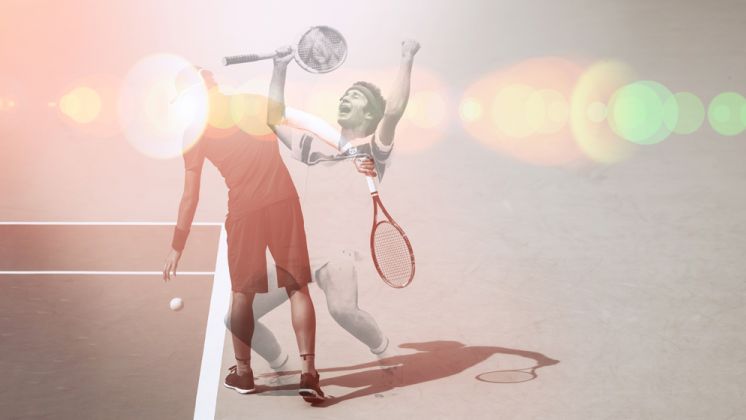Four Gym Exercises That Will Improve Your Tennis
Get set for a summer of tennis with this four-pronged approach to your workout

Tennis is one of the most demanding sports you can play. It requires great skill, incredible fitness and power, and the mental strength to cope with the pressure of match situations. Plus, at the amateur level, there’s the added work of being your own ballboy.
We can’t help you overcome the mental impulse to hit it as hard as you can on match point (clearing the back fence in the process), or your racquet skills, and we’re certainly not volunteering to chase after your wayward serves, but we have asked our friends at Fitness First how to improve your fitness in the gym in ways that’ll translate to the court.
“Tennis incorporates numerous fitness disciplines such as strength, speed, agility, flexibility and stability,” says Fitness First trainer James Capon.
“Therefore, workout routines need to incorporate training from each of these disciplines.”
Here’s how to hit each of those areas on your next gym visit.
Strength – Sandbell Lateral Slam
Those powerhouse first serves and forehands that win you so many points need plenty of strength behind them.
“To build strength use equipment such as dumbbells and sandbells as well as performing bodyweight exercises,” says Capon.
Get the Coach Newsletter
Sign up for workout ideas, training advice, reviews of the latest gear and more.
“One sandbell exercise to incorporate into your workout is the lateral slam. This explosive moment targets multiple muscle groups including your lats, core and legs.”
“Stand with your feet shoulder-width apart with the sandbell on the floor on the outside of your right foot. Keep your chest up while reaching down to grab the sandbell.
“Pick the sandbell up with both two hands and drive your hips forwards while bringing the weight overhead in an arching motion. At full extension, rotate to the left and slam the sandbell outside your left foot.
“Sink down to pick up the sandbell and repeat the movement, slamming back on the right side of the body. Try to work for 45 seconds and then rest for 15 seconds. Repeat three to five times, depending on your fitness level.
“As an easier variation, you can perform the movement on your knees or, to make it harder, try adding a burpee between each slam.”
Speed And Agility – Burpee Sprints
Tennis players need to be quick on their feet to handle matches full of short, intense sprints and lateral movement. You can do speed work on a treadmill, but a better way to work on agility too is to try these burpee sprints.
“Grab a sandbell or other marker and place it in the middle of a room,” says Capon.
“Sprint towards the marker and when you reach it, perform a burpee. Jog backwards to recover and then repeat.” Use this as a finisher at the end of a workout. Work for 30-45 seconds, rest for the remainder of the minute then go again for five minutes in total.
Stability – TRX Pistol Squat
Being strong and stable won’t help you crush your opponent in a general election, but it will on the tennis court. Build these qualities by working on your lower body and core with TRX pistol squats.
“The TRX pistol squat targets your glutes, quads, hamstrings, core and lower back,” says Capon.
“Come in close to the handles with your feet together and take hold. Then raise one foot so your leg is straight. Brace your core as you bend the knee of your standing leg and lower to a comfortable level, then return to the top. Repeat ten to 15 times on each side.”
You can do pistol squats without TRX ropes, but they are very hard. “If you’re new to this exercise, the TRX makes it easier to learn how to do a pistol squat properly,” says Capon. “It requires a good level of flexibility, balance and stability.
“To make the movement more challenging, add a jump as you come back up to the starting position.”
Flexibility – Foam Rolling
The final area to focus on with your tennis training is flexibility.
“Flexibility helps to improve your defensive skills and can also help to prevent injuries,” says Capon.
“To increase flexibility, always stretch your muscles after a workout. A good way to do this is by using a foam roller.”
If you’re new to the world of foam rolling check out our comprehensive guide to self-myofascial release (not as sexy as it sounds), which includes exercises for the major lower-body muscles.
RECOMMENDED: Foam Rolling 101

Nick Harris-Fry is a journalist who has been covering health and fitness since 2015. Nick is an avid runner, covering 70-110km a week, which gives him ample opportunity to test a wide range of running shoes and running gear. He is also the chief tester for fitness trackers and running watches, treadmills and exercise bikes, and workout headphones.









